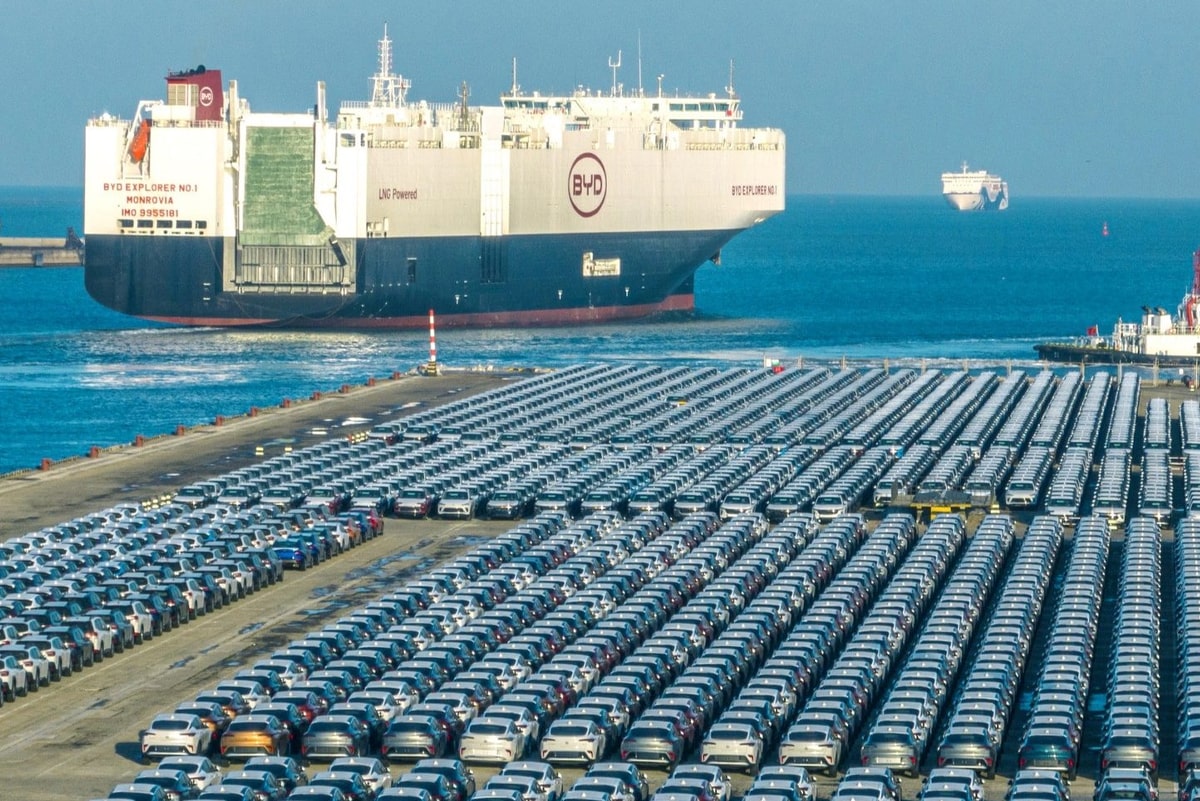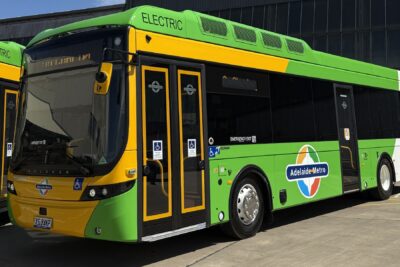New negotiations between the EU and China on EV tariffs
Both sides have agreed to enter into consultations. According to Olof Gill, spokesperson for the EU Commission, EU Trade Commissioner Valdis Dombrovskis and Chinese Trade Minister Wang Wentao held their first “candid and constructive” call on Saturday. Following this exchange, the Chinese Ministry of Commerce confirmed that these consultations had been agreed.
This was preceded by a three-day trip to China by German Economics Minister and Vice-Chancellor Robert Habeck (Greens), who met with Wang Wentao. Habeck wanted to calm the tensions in the looming trade dispute. “One has to be very careful now, this is a first step and many more will be necessary,” Habeck said to reporters in Shanghai after the EU-China talks were announced. “But at least this is a first step that was not possible before. That’s why tonight is a good evening if we want to try to maintain a level playing field and avoid a tariff war.”
The German minister also spoke to the head of the Chinese planning authority, Zheng Shanjie, in China. He subsequently emphasised that China would do everything to prevent the tariffs. Wang Wentao was quoted in his organisation’s official statement as saying that China was prepared to take into account the legitimate concerns of both parties to avoid an escalation of trade conflicts.
However, the EU emphasised that “any negotiated outcome to its investigation must be effective in addressing the injurious subsidisation.” It is precisely these subsidies in China that have been the official target of the EU’s anti-subsidy investigation from the outset: thanks to the advantages resulting from the strong state subsidies in China, manufacturers will be able to offer their vehicles more cheaply on the global market.
EU threatens special tariff of up to 38.1 per cent
During his trip to China, Habeck emphasised that in the case of the EU, these were deliberately special and not punitive tariffs. Unlike in the US, where the new 100 per cent import duty on Chinese EVs is designed to keep carmakers out, the EU only wants to eliminate a distortion of competition with the substantial subsidies in China.
In mid-June, the EU presented the results of the investigation and announced that it would impose special tariffs on EVs imported from China from 4 July (in addition to the existing ten per cent import duty) if no agreement was reached. Different tariffs were set depending on the manufacturer (and the level of subsidisation found). According to the EU investigation, BYD received the lowest amount of subsidies and will be subject to a special duty of 17.4 per cent (i.e. 27.4 per cent in total). Politicians in Brussels see the greatest market distortion in SAIC: the Shanghai-based car manufacturer is being hit with a special duty of 38.1 per cent. Manufacturers who did not participate in the investigation will also be subject to a 38.1 per cent special duty.
There is a new figure on the amount of subsidies Beijing has provided to domestic electric car manufacturers: the Center for Strategic and International Studies (CSIS) estimates in an analysis that the Chinese government has invested at least 230.8 billion dollars in the development of the electric car industry since 2009. In addition to purchase incentives (which have expired in China), this also takes into account the sales tax exemption, infrastructure funding, research funding and government procurement of electric vehicles. With the increasing number of units, the exemption from the ten per cent sales tax has accounted for the largest item of support.
In a table published by the CSIS, the progression of subsidies over time is particularly striking: Between 2018 and 2028, the maximum subsidy per year was 17.4 billion dollars; with the lower unit sales at that time, the subsidy amount corresponded to up to 25.4 per cent of the total sales value. In 2021, the subsidy was already 30.1 billion dollars, and in 2022 and 2023, it was just over 45 billion dollars. As the sales volume has increased enormously at the same time, the subsidy rate has fallen to 11.4 per cent. To put it another way, according to the CSIS figures, every EV sold by a Chinese manufacturer in 2018 was subsidised by the state with 13,860 dollars, compared to 4,588 dollars in 2023.
However, these figures should be treated with caution, as the study is based on several assumptions. For example, the CSIS assumed that 25 per cent of electric vehicles sold were not eligible for subsidies. In addition, researchers assumed that the subsidies provided by the respective local governments in 2023 amounted to 15 per cent of the support provided by the central government in Beijing, to name just two examples.
bnnbloomberg.ca, politico.eu, gov.cn, csis.org (study)





0 Comments